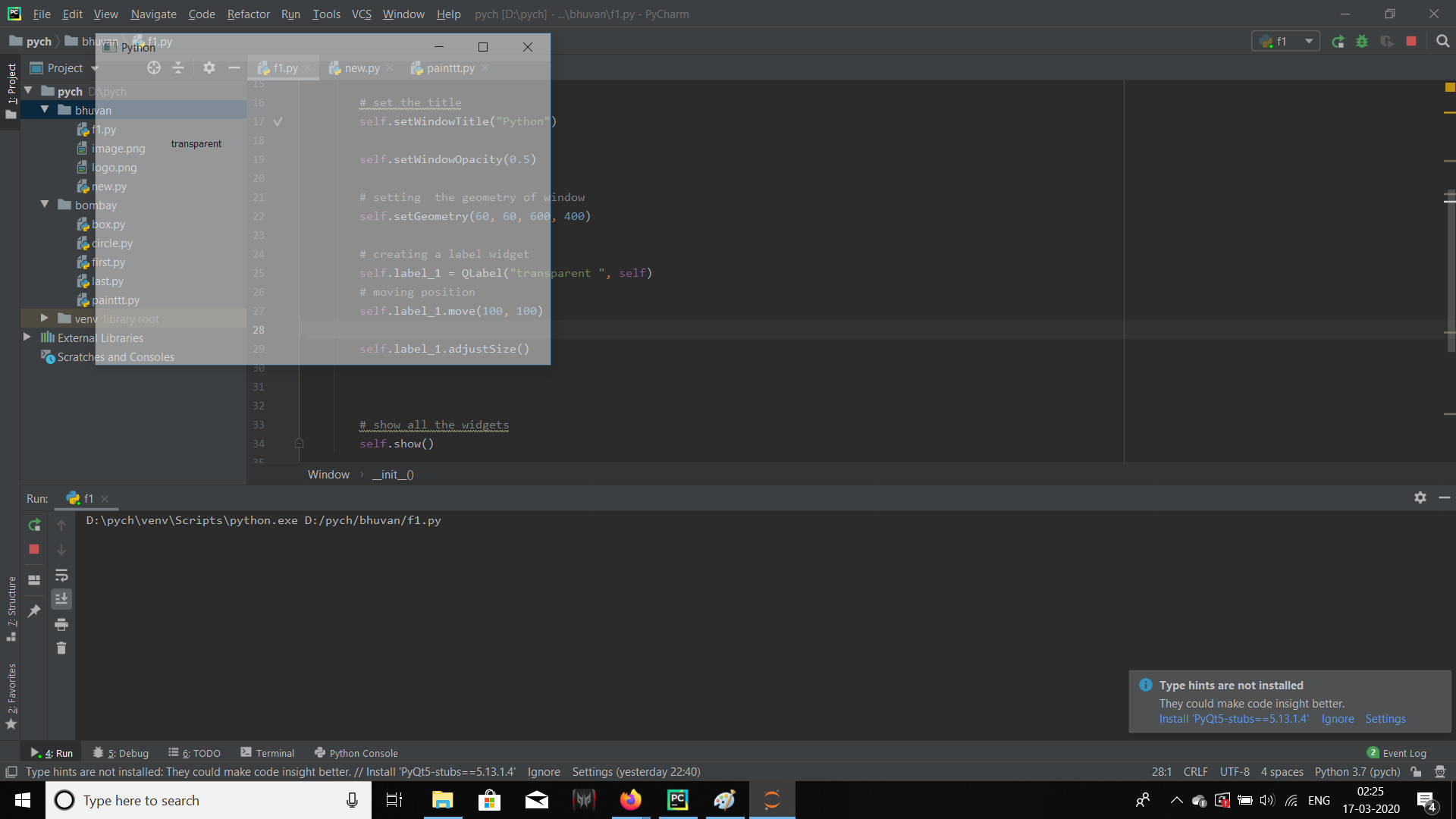

- #PYQT5 CREATOR HOW TO#
- #PYQT5 CREATOR INSTALL#
- #PYQT5 CREATOR UPGRADE#
- #PYQT5 CREATOR CODE#
- #PYQT5 CREATOR DOWNLOAD#
In the sample code above, it was set to ‘H2k infosys main page’.Īfter creating the window, the window would not be displayed until you explicitly hardcode your program to show it, using the show() method. Your preferred title can then be set as an argument in string format. For this, you use the setWindowTitle() class. You may also decide to give your window a title. The width was set to 400 pixels while the height was set to 300 pixels. That means the window displays 50 pixels vertically and horizontally from the top left corner of my screen. From that location, the width and height of the window is determined as set.įor the example above, the x and y position was set to 50 pixels. If you set the x and y position to 0 and 0 respectively, the window will begin at the top left corner of your screen. This class takes four arguments: the x position, the y position, the width and the height. To do this, make use of the setGeometry() class. You may choose to set the location of the window. The window is the GUI that will be created by instantiating an object from the QMainWindow() class. Step 3: Create a window and define some specification create a window for the GUI If you attempt to run the code from a shell without the argument, it would throw an error. The argument sys.argv is necessary when you are running the code from a shell. These steps allow PyQt to interface with your machine. Step 2: Instantiate the QApplication #instantiate the application with which PyQt interfaces with your machine #import necessary librariesįrom PyQt5.QtWidgets import QApplication, QMainWindow For this, we will be needing the QtWidgets, QApplication, and QMainWindow class. Step 1: We would start by importing the necessary libraries. Building a Basic GUI Application with PyQt

Once you get the ‘successfully installed PyQt5 message’, you can go on to build GUI Applications in Python.
#PYQT5 CREATOR INSTALL#
After it has been successfully installed, type the following command to install PyQt5 Once you run the code, the installation begins. Afterward, open your Command Prompt in the location where the get-pip.py file was saved. Make sure you save the file as a py file and take note of the file location.
#PYQT5 CREATOR DOWNLOAD#
To install pip, you will first need to download the get-pip.py file. If you are using a Python version that is less than Python 3.4, you will manually need to install pip on your system as pip does not come preinstalled.
#PYQT5 CREATOR HOW TO#
Let’s see how to install it on our machine. We shall be focusing our attention on the use of PyQt5. Some of such method includes QGraphicsitemAnimation, QMatrix, QFileDialog, QDataStream, QPyObject, QSet, etc There are many other compatibility differences and method supports in both versions.Some signals in PyQt4 is not supported, such as QObject.emit(), nnect(), SIGNAL() are not supported in PyQt5.

Some PyQt5 does not support deprecated features in Qt version 5.0.In contrast, PyQt4 does support both Python 2 and Python 3. PyQt5 only works with Pyth you on 2.6 or later. PyQt5 can only work with Python 2.6 or later.1.One more thing, note that you cannot use PyQt4 and PyQt5 on your machine at the same time.
#PYQT5 CREATOR UPGRADE#
However, you can easily upgrade from PyQt4 to PyQ5. This is because there are other previous versions, one of the popular being PyQt4.īe aware that PyQt5 is cannot be used with PyQt4 (so be mindful of the version you are installing on your machine). You’d observe PyQt5 has been used since the beginning of this tutorial.


 0 kommentar(er)
0 kommentar(er)
